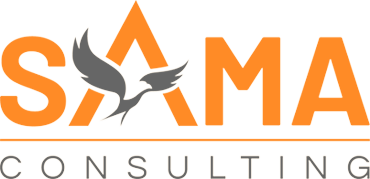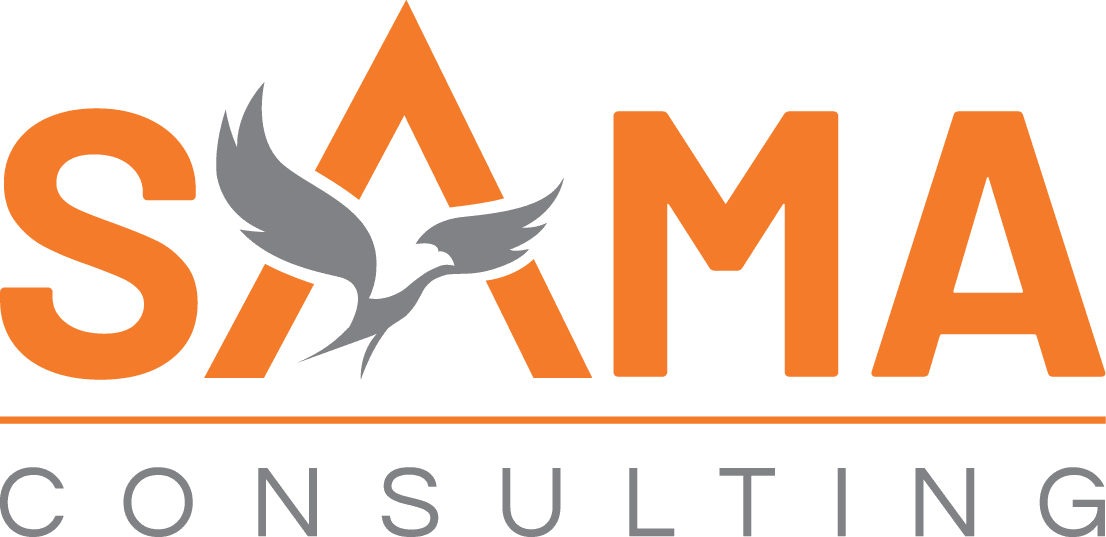
Is Baan ERP Still Relevant? The Long-Term Value of This Established Platform
In an era where cloud-native ERPs dominate headlines and AI-powered solutions capture executive attention, a critical question emerges for the thousands of organizations still running Baan ERP systems: Is this decades-old platform still relevant in 2025? The answer isn’t as straightforward as many assume, and for businesses in manufacturing, aerospace, and logistics, understanding Baan ERP‘s evolution into Infor LN could be the key to unlocking sustained competitive advantage.
This comprehensive analysis examines the current state of Baan ERP, its transformation into Infor LN, and the strategic considerations that will determine its long-term value for your organization. For companies seeking expert guidance on maximizing their ERP investments, SAMA Consulting offers specialized expertise in navigating these complex decisions.
The Evolution from Baan ERP to Infor LN: A Brief History
The story of Baan ERP begins in 1978 when Jan Baan and his brother Paul founded the Baan Corporation in Barneveld, Netherlands. Originally focused on providing financial and administrative consulting services, the company entered the software world with the development of its first software package in 1979. This marked the beginning of what would become one of the most influential ERP platforms in industrial manufacturing.
The acquisition journey that led to today’s Infor LN began in the early 2000s. After Allen Yurko stepped down in June 2003, Invensys sold its Baan unit to SSA Global Technologies for US$ 135 million. SSA renamed Baan as SSA ERP Ln, and in May 2006, SSA was acquired by Infor Global Solutions. This transition transformed the original Baan ERP into what we now know as Infor LN.
Today, Infor LN serves as the flagship manufacturing ERP solution within Infor’s extensive portfolio. Companies using Infor LN are majorly from the United States with 176 customers, representing 34.78% of the user base, followed by India with 74 customers (14.62%) and Italy with 58 customers (11.46%). This global distribution reflects the platform’s continued relevance across diverse markets and regulatory environments.
The platform’s industry focus remains strong, particularly in industrial manufacturing and aerospace & defense sectors, where complex production processes and stringent compliance requirements demand sophisticated ERP capabilities.
Ready to maximize your Baan ERP investment for the future?
Sama delivers specialized Baan ERP modernization and Infor LN consulting services, helping you navigate cloud migration, system upgrades, and digital transformation while preserving your existing investments and industry-specific capabilities.

Technical Capabilities: Why Baan ERP’s Architecture Endures
Modular Design and Customization Excellence
Baan ERP’s enduring relevance stems largely from its modular architecture and exceptional customization capabilities through Baan Tools. Unlike many modern ERPs that prioritize standardization, Baan ERP was designed to adapt to unique business processes rather than forcing organizations to conform to rigid software constraints.
The platform’s modular approach allows companies to implement specific functionality packages based on their operational requirements. This flexibility has proven particularly valuable in manufacturing environments where production workflows, quality control processes, and regulatory compliance requirements vary significantly across industries and geographic regions.
Industry-Specific Functionality
Infor LN is particularly suited for industries with complex manufacturing processes and supply chain operations such as aerospace, automotive, high-technology, and life sciences. The platform’s deep industry functionality includes:
- Advanced Production Planning: Sophisticated scheduling algorithms that handle complex manufacturing constraints
- Quality Management: Comprehensive quality control workflows with statistical process control integration
- Project Manufacturing: Robust project-based manufacturing capabilities for engineer-to-order environments
- Supply Chain Optimization: Demand-driven supply chain management with advanced forecasting capabilities
For organizations in aerospace manufacturing, where precision and compliance are paramount, these industry-specific features represent significant competitive advantages that newer, more generic ERP platforms often struggle to match.
Modern Technology Integration: Bridging Legacy and Innovation
Infor ION Integration Platform
One of the most compelling arguments for Baan ERP’s continued relevance is its integration with modern Infor technologies. The Infor ION integration platform serves as a middleware layer that connects Infor LN with other enterprise applications, cloud services, and emerging technologies.
Infor ION enables real-time data synchronization across disparate systems, allowing organizations to maintain their Baan ERP investment while leveraging modern analytics, artificial intelligence, and machine learning capabilities. This integration approach provides a migration path that preserves existing customizations while enabling digital transformation initiatives.
For organizations seeking to understand the full potential of this integration approach, the ultimate guide to Infor ION for 2024 provides comprehensive insights into implementation strategies and benefits.
Cloud Migration Options with Infor CloudSuite
The evolution of Baan ERP into the cloud era represents perhaps the most significant development in ensuring its long-term relevance. Infor CloudSuite consulting services enable organizations to migrate their on-premises Baan ERP implementations to cloud-based infrastructures while maintaining functional continuity.
This cloud migration capability addresses several critical challenges:
- Reduced Infrastructure Costs: Elimination of hardware maintenance and data center expenses
- Enhanced Scalability: Ability to scale computing resources based on business demand
- Improved Security: Enterprise-grade security measures and compliance certifications
- Automatic Updates: Streamlined software updates and patch management
The transition to cloud-based deployment models has been particularly beneficial for organizations in the aerospace and defense sectors, where CloudSuite empowers businesses with scalable cloud solutions that meet stringent security and compliance requirements.
Artificial Intelligence and Analytics Integration
Infor is named a Leader in the 2024 Gartner® Magic Quadrant™ for Cloud ERP for Product-Centric Enterprises, reflecting the platform’s successful integration of advanced analytics and AI capabilities. Through Infor OS, organizations can leverage:
- Predictive Analytics: Machine learning algorithms that forecast demand, equipment failures, and quality issues
- Process Optimization: AI-driven recommendations for improving operational efficiency
- Enhanced Decision Making: Real-time dashboards and analytics that provide actionable business insights
These capabilities transform traditional Baan ERP implementations from reactive reporting systems into proactive business intelligence platforms.
Addressing Modern Challenges: The Reality of Legacy System Management
The Cost of Maintenance and Technical Debt
Organizations operating Baan ERP systems face legitimate concerns about maintenance costs and technical debt accumulation. Organizations that modernized their ERP systems saw 90.5% experience reduced IT maintenance costs in 2024 (up from 68% in 2023). This statistic highlights both the challenge and the opportunity facing Baan ERP users.
The increasing cost of maintaining legacy systems stems from several factors:
- Skill Scarcity: Declining availability of developers with expertise in older programming languages and frameworks
- Hardware Dependencies: Aging server infrastructure requiring expensive maintenance contracts
- Integration Complexity: Difficulty connecting legacy systems with modern applications and data sources
However, these challenges can be addressed through strategic modernization rather than complete system replacement. Specialized Baan ERP consulting services can help organizations navigate modernization options while preserving their existing investments.
Data Migration and System Upgrades
One of the most significant challenges facing Baan ERP users is managing data migration during system upgrades or platform transitions. Companies are expected to spend $183B on ERP systems in 2024, indicating the substantial investment organizations are making in ERP modernization initiatives.
Successful data migration requires careful planning and execution to ensure business continuity. Organizations should consider mastering data migrations strategy, tools, and best practices to minimize risks and maximize the value of their ERP investments.
Skills Development and Knowledge Transfer
The challenge of maintaining Baan ERP expertise extends beyond technical support to include user training and knowledge transfer. As the workforce evolves, organizations must invest in Baan training programs to ensure their teams can effectively utilize the platform’s capabilities.
This investment in human capital is particularly critical for organizations in complex manufacturing environments where ERP system knowledge directly impacts operational efficiency and product quality.
Ready to maximize your Baan ERP investment for the future?
Sama delivers specialized Baan ERP modernization and Infor LN consulting services, helping you navigate cloud migration, system upgrades, and digital transformation while preserving your existing investments and industry-specific capabilities.

Industry-Specific Advantages: Where Baan ERP Excels
Manufacturing Excellence
Infor LN is the most powerful and comprehensive manufacturing ERP solution available for managing the demands of global operations for complex manufacturers. This strength in manufacturing stems from the platform’s deep understanding of production processes, quality control requirements, and supply chain complexities.
Key manufacturing advantages include:
- Multi-Site Production Planning: Sophisticated algorithms for coordinating production across multiple facilities
- Quality Control Integration: Comprehensive quality management workflows with statistical process control
- Regulatory Compliance: Built-in compliance frameworks for industries with strict regulatory requirements
- Project Manufacturing: Robust capabilities for engineer-to-order and project-based manufacturing environments
Aerospace and Defense Specialization
The aerospace and defense industries present unique challenges that Baan ERP’s architecture is well-suited to address. For industrial manufacturing, Infor LN is particularly recommended because it has ideal tools with industry-specific functionality.
In aerospace manufacturing, where precision and traceability are critical, Baan ERP provides:
- Comprehensive Traceability: Complete tracking of materials and components throughout the production process
- Compliance Management: Built-in frameworks for aerospace industry regulations and standards
- Complex BOM Management: Advanced bill of materials handling for multi-level assemblies
- Quality Assurance: Integrated quality control workflows that meet aerospace certification requirements
These capabilities become even more valuable as the aerospace industry continues to evolve, with robust demand expected to continue into 2024, particularly for weapons and next-generation capabilities.
Strategic Considerations for Long-Term Value
Total Cost of Ownership Analysis
When evaluating Baan ERP’s long-term relevance, organizations must consider total cost of ownership (TCO) beyond initial licensing fees. The most common benefits organizations quantified were related to productivity and efficiency (74.3%), followed by operating and/or labor costs (56.8%), and IT maintenance costs (45.9%).
A comprehensive TCO analysis should include:
- Direct Costs: Software licensing, hardware infrastructure, and maintenance contracts
- Indirect Costs: Training, consulting services, and system administration
- Opportunity Costs: Business value lost due to system limitations or inefficiencies
- Risk Mitigation: Costs associated with business continuity and disaster recovery
Migration vs. Modernization Strategies
Organizations face a critical decision between complete ERP replacement and in-place modernization. According to Gartner, 45% of CIOs seek to decrease investments in legacy infrastructure, suggesting a significant trend toward modernization rather than wholesale replacement.
For many Baan ERP users, Infor LN consultants can provide guidance on modernization strategies that preserve existing investments while enabling digital transformation initiatives.
Future-Proofing Through Integration
The key to maximizing Baan ERP’s long-term value lies in strategic integration with modern technologies. Rather than viewing the platform as a legacy system, organizations should consider it as the foundation for a broader digital ecosystem that includes:
- Cloud Infrastructure: Leveraging cloud services for scalability and cost optimization
- Analytics Platforms: Integrating business intelligence and machine learning capabilities
- Mobile Applications: Enabling mobile access to ERP functionality for field operations
- IoT Integration: Connecting manufacturing equipment and sensors for real-time monitoring
Ready to maximize your Baan ERP investment for the future?
Sama delivers specialized Baan ERP modernization and Infor LN consulting services, helping you navigate cloud migration, system upgrades, and digital transformation while preserving your existing investments and industry-specific capabilities.

The Competitive Landscape: How Baan ERP Compares
Market Position and Share
While Infor Baan commands 0.31% market share in the Enterprise Resource Planning (ERP) market, this figure doesn’t fully capture the platform’s significance in specific industry verticals. The relatively small market share reflects the platform’s focused approach on complex manufacturing environments rather than broader market penetration.
In specialized manufacturing sectors, particularly aerospace and defense, Baan ERP’s market position is significantly stronger due to its industry-specific functionality and proven track record in mission-critical applications.
Competitive Advantages
Baan ERP’s competitive advantages become apparent when compared to newer, cloud-native ERP solutions:
- Customization Flexibility: Unlike modern ERPs that prioritize standardization, Baan ERP can be extensively customized to match unique business processes
- Industry Expertise: Deep understanding of manufacturing processes and regulatory requirements
- Proven Reliability: Decades of successful implementations in mission-critical environments
- Integration Capabilities: Sophisticated integration options through Infor ION and other middleware platforms
Addressing Competitive Pressures
To maintain competitiveness, organizations must address the challenges that newer ERP solutions highlight:
- User Experience: Modernizing interfaces and improving usability through web-based clients and mobile applications
- Implementation Speed: Leveraging pre-configured industry templates and accelerated deployment methodologies
- Cloud-First Approach: Transitioning to cloud-based deployment models for improved scalability and cost efficiency
Future Outlook: The Road Ahead for Baan ERP
Infor’s Commitment to Infor LN
Infor’s continued investment in Infor LN development demonstrates the platform’s strategic importance within the company’s portfolio. The platform’s recognition as a Leader in the 2024 Gartner® Magic Quadrant™ for Cloud ERP for Product-Centric Enterprises reflects ongoing innovation and market relevance.
Key areas of continued development include:
- Enhanced Cloud Capabilities: Expanding cloud-native functionality and deployment options
- AI Integration: Deeper integration of artificial intelligence and machine learning capabilities
- User Experience Improvements: Modernizing interfaces and improving overall usability
- Industry-Specific Enhancements: Continued development of specialized functionality for key vertical markets
Emerging Technology Integration
The future of Baan ERP lies in its ability to integrate with emerging technologies that are reshaping manufacturing and supply chain management:
- Internet of Things (IoT): Connecting manufacturing equipment and sensors for real-time monitoring and predictive maintenance
- Artificial Intelligence: Leveraging machine learning for demand forecasting, quality prediction, and process optimization
- Blockchain: Implementing distributed ledger technology for supply chain transparency and traceability
- Advanced Analytics: Utilizing big data analytics for strategic decision-making and operational optimization
Industry Evolution and Adaptation
As manufacturing industries continue to evolve, Baan ERP’s ability to adapt to new requirements will determine its long-term relevance. Key trends shaping the future include:
- Sustainability Initiatives: Integrating environmental impact tracking and reporting capabilities
- Supply Chain Resilience: Enhancing risk management and contingency planning functionality
- Digital Twin Technology: Supporting virtual modeling and simulation of manufacturing processes
- Regulatory Compliance: Adapting to evolving industry standards and government regulations
Maximizing Your Baan ERP Investment: Practical Recommendations
Assessment and Planning
Organizations should begin by conducting a comprehensive assessment of their current Baan ERP implementation, including:
- Technical Architecture Review: Evaluating system performance, integration points, and technical debt
- Business Process Analysis: Identifying areas where the system excels and where improvements are needed
- Skills Assessment: Evaluating team capabilities and training requirements
- Cost-Benefit Analysis: Comparing modernization costs with potential business benefits
Modernization Strategies
Based on assessment results, organizations can pursue various modernization strategies:
- Incremental Upgrades: Implementing regular system updates and patches to maintain security and functionality
- Cloud Migration: Transitioning to cloud-based deployment models for improved scalability and cost efficiency
- Integration Enhancement: Leveraging Infor ION and other integration platforms to connect with modern applications
- User Experience Improvements: Implementing web-based clients and mobile applications to improve usability
Building Internal Capabilities
Long-term success with Baan ERP requires ongoing investment in internal capabilities:
- Technical Training: Ensuring IT teams have the skills needed to maintain and enhance the system
- User Training: Providing comprehensive training programs to maximize user productivity
- Knowledge Management: Documenting system configurations, customizations, and business processes
- Vendor Relationships: Maintaining strong relationships with specialized consulting partners
For organizations seeking expert guidance in these areas, exploring insights and resources can provide valuable perspectives on best practices and emerging trends.
Conclusion: The Enduring Value of Baan ERP
The question of Baan ERP’s relevance in 2025 cannot be answered with a simple yes or no. For organizations in complex manufacturing environments, particularly those in aerospace, defense, and industrial manufacturing, the platform continues to offer significant competitive advantages through its deep industry functionality, customization capabilities, and proven reliability.
However, realizing the platform’s long-term value requires strategic thinking and proactive investment. Organizations must embrace modernization opportunities, including cloud migration, AI integration, and enhanced user experiences, while preserving the core capabilities that make Baan ERP valuable.
The evolution from Baan ERP to Infor LN represents not just a change in naming but a fundamental transformation that positions the platform for future growth. Through strategic partnerships with specialists in Baan ERP implementation and modernization, organizations can navigate this transformation successfully while maximizing their existing investments.
Success with Baan ERP in 2025 and beyond requires a balanced approach that acknowledges both the platform’s strengths and its challenges. By focusing on continuous improvement, strategic modernization, and investment in human capital, organizations can ensure that their Baan ERP systems continue to deliver value for years to come.
For organizations ready to explore modernization opportunities or optimize their current implementations, partnering with experienced consultants can provide the expertise needed to make informed decisions and execute successful transformation initiatives.
About the Author
Mohit Kumar is a seasoned ERP consultant and solution architect with over 12+ years of specialized experience in Baan ERP and Infor LN implementations. Having led digital transformation initiatives across aerospace, manufacturing, and logistics industries, Mohit has helped organizations maximize their ERP investments while navigating complex modernization challenges. His expertise spans system architecture, cloud migrations, and integration strategies that preserve business continuity while enabling innovation.
Mohit holds certifications in Infor LN, Infor ION, and cloud technologies, and has successfully guided over 50 organizations through ERP modernization initiatives. His practical approach combines deep technical knowledge with strategic business insight, helping clients make informed decisions about their ERP investments.
Learn more about specialized Baan ERP consulting services and how expert guidance can help optimize your ERP investment.
Ready to maximize your Baan ERP investment for the future?
Sama delivers specialized Baan ERP modernization and Infor LN consulting services, helping you navigate cloud migration, system upgrades, and digital transformation while preserving your existing investments and industry-specific capabilities.

